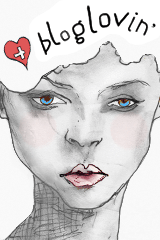So as I was mentioning in the
skincare regimen post, the use of AHA's and BHA's ingredients as a part of the exfoliation process. As an instructor, I've been a witness to many courageous students (and their even more courageous partners) test out chemical peels...sometimes against my wishes and knowledge. Because of what I know and experience, I understand that different acids are going to benefit different skin types/conditions. Sometimes, it takes seeing to believe. I've seen scarring, I've seen hyperpigmentation (excess melanin which darkens the skin), and even hypopigmentation (lack of melanin which actually means loss of color) all because of choosing the wrong acid. So there are a couple of things to think about when choosing an acid for a professional treatment and even for your take home recommendations.
Buzzworthy AHA's and BHA
The most common AHA's are glycolic and lactic and BHA is salicylic. These ingredients are very similar in that they are used to eat the protein or "glue" that holds skin cells together. They stimulate cell turnover/encourage cell reproduction, which means that they can kick start the production of elastin and collagen and "thicken" the skin. However, all three are going to be best utilized by different skin types and their challenges.
Glycolic is derived from sugar cane and in some instances, unripe grapes. It has the smallest molecule which allows it to penetrate the deepest. The benefit is that it can reach the damaged cells that deeper down in the layers. So this would be great for scars, stretchmarks, acneic/oily skin. The downside is that it is the least controllable. It's like the earring that falls in the couch cracks vs. the shoe that falls into the couch cracks. The earring will get deeper into the crevices because it can get past many layers. So glycolic penetrates deeper which could actually cause inflammation (which when experienced in extended amounts of time causes free radicals) and trauma to the skin. That being said, people that fall in the Type 5 of the Fitzpatrick Scale could be vulnerable to hyperpigmentation.
Lactic is also an AHA but has the largest molecule. So lactic is kind of like the shoe, only getting so far within the skin. So sensitive skin types and higher Fitzpatricks would be good candidates for this acid. Lactic also lightens and brightens the skin and binds moisture to the surface- dry, prematurely aging, and aging skin CHECK! Remember Cleopatra and her milk baths? Yeah, that's because lactic comes from sour milk products. So her skin stayed silky smooth and healthy!
Salicylic is a BHA and is oil-loving. It's also a component in aspirin. So if you have allergies or sensitivities to aspirin then that could cause a problem. Salicylic helps regulate oil production, neutralize bacteria, and treat acne in turn. Salicylic's molecule is larger than glycolic and smaller than lactic, putting it right in the middle!
The Fitzpatrick Scale
A lot of you might be wondering about this Fitzpatrick Scale I keep referring to. Well this is a way of measuring how UV rays affect your skin and your sensitivities.
If you are Level One on the Fitzpatrick Scale then your body doesn't respond as quickly with the production of melanin to protect your skin as quickly as a higher level. Level Five and up are more susceptible to hyperpigmentation because their body responds quicker and produces melanin for UV protection. Higher levels have a higher melanin count to create the pigment of their skin tone.
This graph shows the levels and the characteristics that describe the effects. Common Nationalities describe the possible geography of which clients are from or possibly their ancestry was from. It's been said that Fitzpatrick level can be influenced by your relatives and where they came from. This isn't to say that the darker the skin tone, the higher Fitzpatrick you are. You could be African American and still burn, it would be based on how your skin reacts when out in the sun. And you could be as pale as I am, but still be a Level Three because you tan quickly rather than burn! Just take the test
here to see what level you are.
Back to peels...
Since higher Fitzpatricks are more prone to hyperpigmentation, glycolic acids at a high percentage could cause this to occur. The best candidates for these types of peels would be low Fitzpatricks, higher Fitzpatricks are going to have a better result with lactic. And since lower levels don't have as much protection it's going to be very very VERY important to use sun protection, especially if you are using products with AHA's in them.
Knowing your skin means smart decisions in skin care...so get to it!

 PS. Jane Wurwand is an AMAZING woman. Her philanthropy is inspiring and she's just a "girl-power" kinda lady that I adore. Her blog has some pretty wonderful tidbits as well.
PS. Jane Wurwand is an AMAZING woman. Her philanthropy is inspiring and she's just a "girl-power" kinda lady that I adore. Her blog has some pretty wonderful tidbits as well.
.png)




.jpg)













